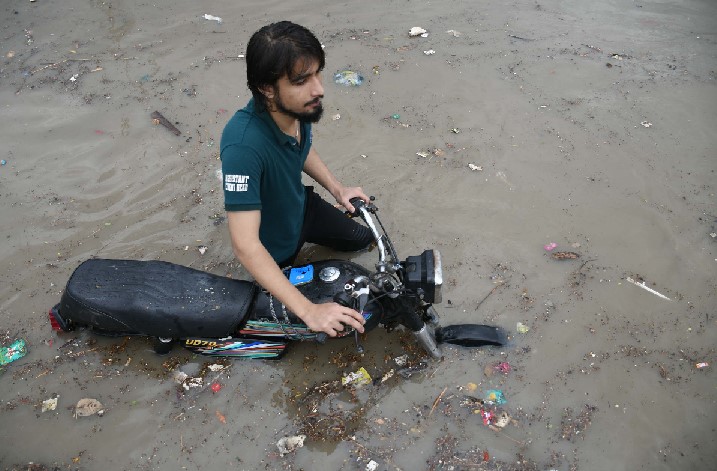
KARACHI: Heavy downpour in Karachi on Tuesday brought life to a standstill, triggering urban flooding, power outages and leaving at least eleven people dead coupled with power outages in several areas.
Authorities have advised people to avoid commuting, as many returning from work and school remain stranded with water rising several feet in areas, including Malir — a situation reminiscent of the devastating 2022 rains.
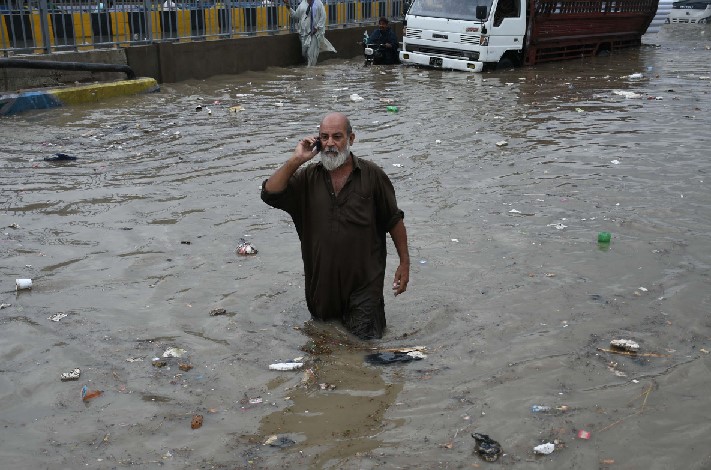
Intermittent downpours continued to lash Karachi throughout the day, leaving much of the city submerged. Several neighbourhoods, including Gulshan-e-Hadeed, Korangi Crossing, Liaquatabad, Baldia Town, Rafah-e-Aam, and Shah Faisal Colony, reported rainwater entering homes.
In some areas, particularly Malir and North Karachi, water levels rose to around four feet, forcing residents to abandon vehicles and wade through flooded streets.
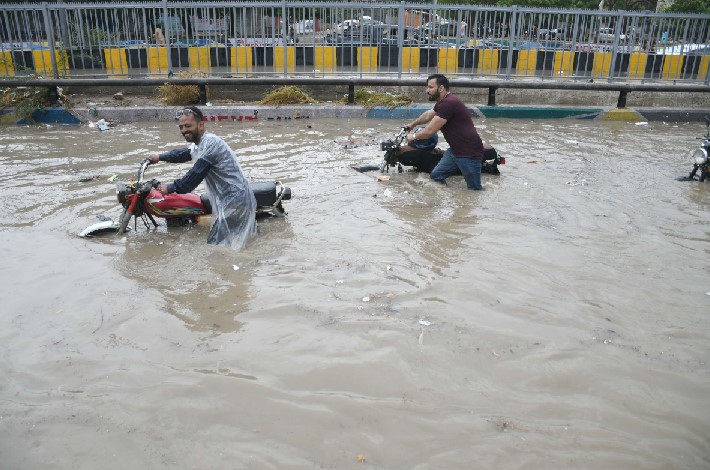
Traffic came to a grinding halt on key arteries including, Sharea Faisal, University Road, and II Chundrigar Road. Vehicles broke down on waterlogged streets, with long queues seen on Nagan Chowrangi, Hub River Road, and Miran Naka, where commuters remained stuck for hours.
The flooding also inundated low-lying neighbourhoods in Surjani Town, North Nazimabad’s Shadman Town, and several areas of District Malir.
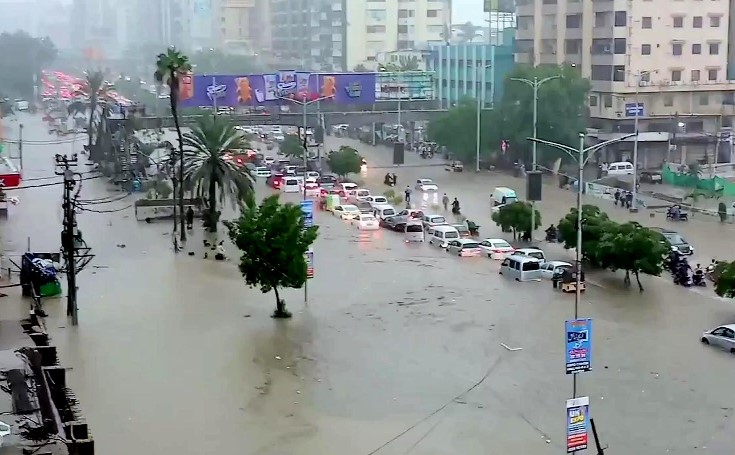
Moreover, a wall of a house collapsed in Gulistan-e-Jauhar Block 12, resulting in four casualties and injuring two others, said rescue officials. Meanwhile, another wall collapse in Orangi killed a child, while other people killed in rain-related incidents, pushing the death toll to eight.
A Met Office spokesperson said the next two days are critical for Karachi with regards to rain and added that the port city likely to receive more heavy rainf on August 20 and 21.
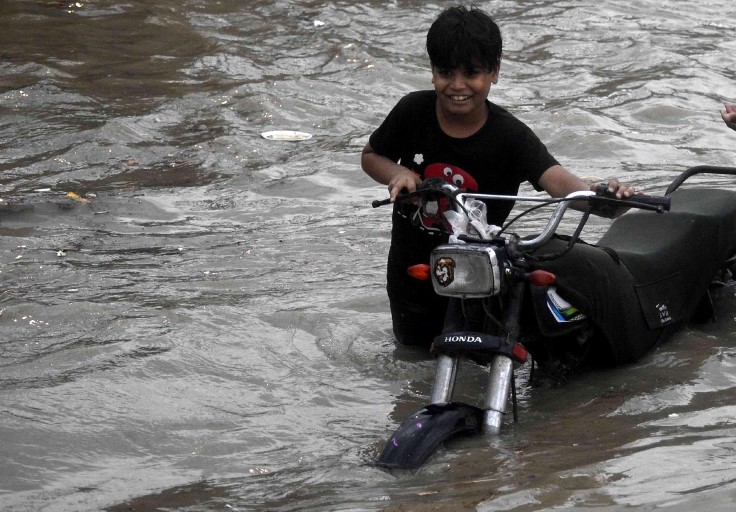
As per the Met Office’s statistics, the highest rainfall was recorded in Gulshan-e-Hadeed (170mm) followed by Airport Old Area (158.5mm), Jinnah Terminal (152.8mm), Nazimabad (149.6mm), Surjani Town (145.2mm).
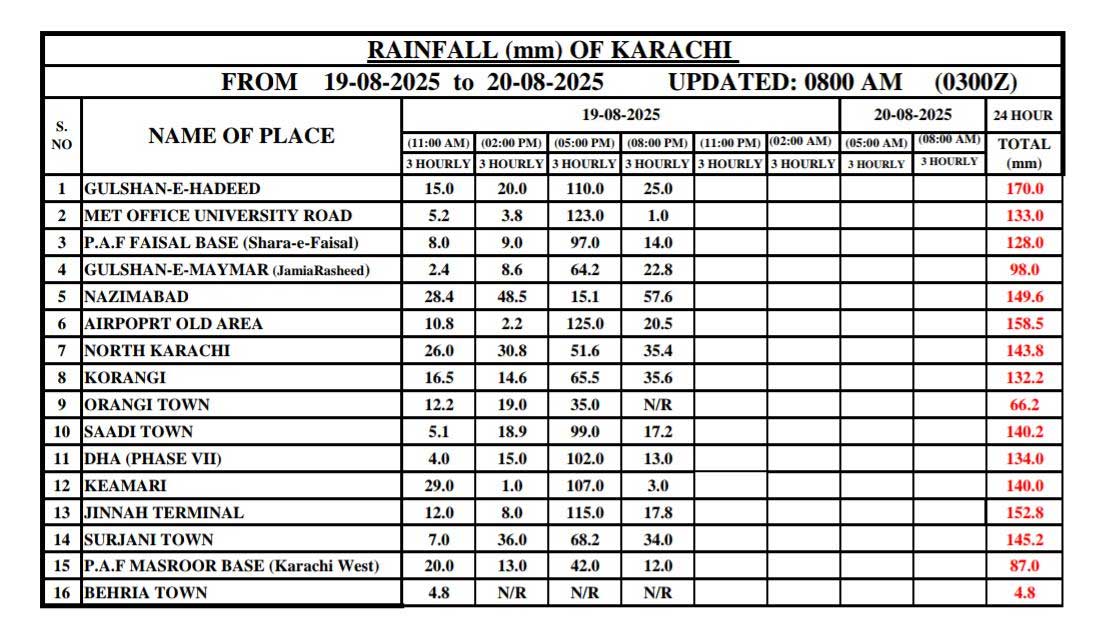
The heavy showers also disrupted flight operations at Jinnah International Airport. At least eight flights were cancelled and 20 others delayed, with several inbound flights diverted to other cities. A Pakistan International Airlines (PIA) flight from Skardu (PK-456) was redirected to an alternate airport, while a Dubai-Karachi flight operated by Flydubai (FZ-335) was diverted to Multan.
PIA also cancelled its Karachi-Quetta flights PK-310 and PK-311, along with Karachi-Islamabad flights PK-308 and PK-309. Two Sukkur-bound flights (PK-536 and PK-537) were also scrapped, while private carriers suspended their scheduled Dubai services. Departures and arrivals from Jeddah, Sharjah, Abu Dhabi, Colombo, Medina, Peshawar, and Toronto faced delays ranging between one to five hours, airport sources confirmed.
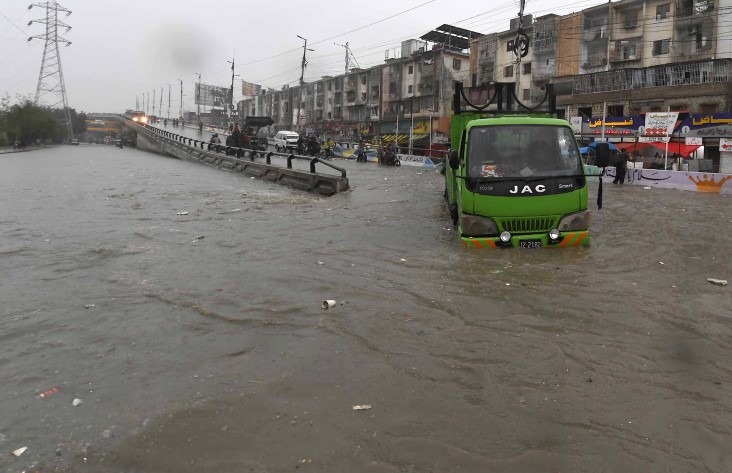
Rain emergency
CM Sindh Murad Ali Shah has issued directives to implement Rain Emergency Plan in the metropolis while ordering immediate measures to drain water from low-lying areas and roads.
Sindh Home Minister Ziaul Hassan Lanjar has also directed police to prioritise citizens’ safety while urging the residents to avoid unnecessary travel.
With a Rain Emergency Cell established at the Governor’s House on the directions of Kamran Tessori, Karachi Mayor Murtaza Wahab said that the city has received more than 100mm of rains so far.
“People have the right to criticise, but the facts should also be known. It rained continuously for two hours in the city, it is still ongoing.
“We are all on the streets, monitoring the situation,” Wahab remarked, adding that the authorities were facing difficulty in clearing the Tipu Sultan nullah.
“People should not leave their homes unnecessarily. The situation returns to normal after an hour and a half, after the rain stops,” the mayor said while highlighting that the situation in the city worsens if there’s more than 40mm of rain.
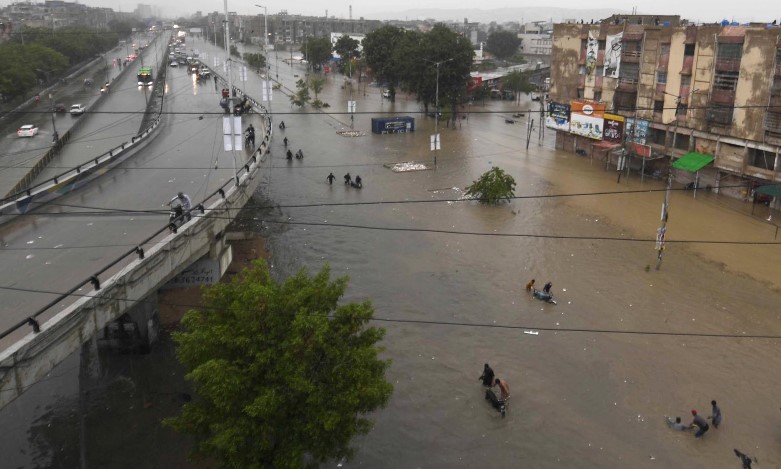
More torrential rains
According to Met Office, strong monsoon currents from Arabian Sea and Bay of Bengal are continuously penetrating the country, especially the southern parts. Under the influence of these meteorological conditions, widespread rain-wind/thundershower (with scattered heavyfalls at times very heavy) is expected in several Sindh districts, including Karachi, from August 19-22, with occasional gaps.
It is also expected in Mithi, Tharparker, Umer Kot, Mirpurkhas, Hyderabad, Shaheed Benazirabad, Karachi, Thatta, Badin, Sajawal, Tando Allayar, Tando Muhammad Khan, Sanghar, Jamshoro, while at scattered places in Sukkur, Larkana, Khairpur, and Jacobabad.
The PMD added that torrential rains may cause urban flooding in low-lying areas of Sindh, including Karachi.
Furthermore, the downpour also resulted in electricity outages in multiple areas. However, K-Electric (KE) has said that the city was being provided with an uninterrupted power supply from more than 1,770 feeders out of 2,100.
“Our teams have been on-ground, working through challenging conditions to restore power as quickly and safely as possible,” said Sadia Dada, Chief Distribution and Marcomms Officer. “Temporary shutdowns were implemented in waterlogged areas purely for public safety, and restoration was prioritized as soon as conditions allowed.
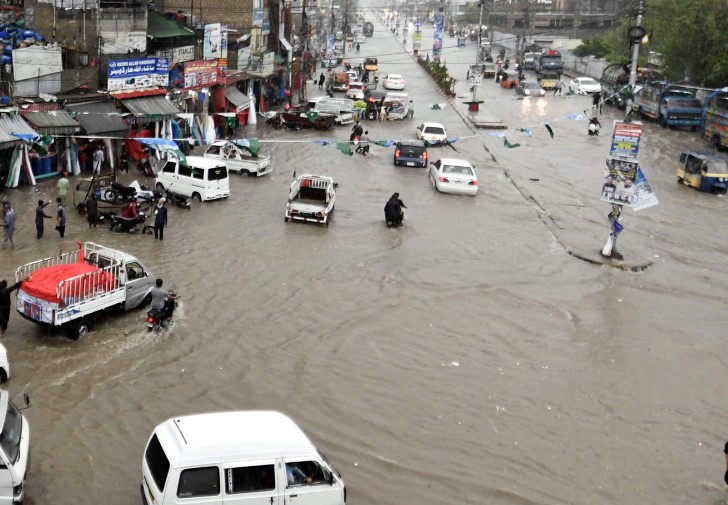
“We strongly urge citizens to maintain safe distance from electrical infrastructure during rains including poles, electricity meters, service brackets, broken and tangled internet/cable wires. Internal wiring and water motors should not be operated with wet hands or in standing water. Only certified electricians should be engaged in case of electrical faults within households.”
In light of the Met Office’s prediction, Sindh Chief Minister Syed Murad Ali Shah chaired an emergency meeting a day earlier to oversee preparations for the monsoon rains expected to impact Karachi and other parts of the province.
The CM put the local governments, administration and traffic police on high alert, and directed them to strengthen coordination to ensure convenience for the people in case of heavy rains.
Monsoon deaths
Karachi is not the only part of the country witnessing monsoon showers, as heavy rains have wreaked havoc across Pakistan’s northern areas in recent days.
So far, the death tally in rain-related incidents has climbed to 660, with reports of casualties and widespread destruction pouring in from all provinces and regions.
Khyber Pakhtunkhwa (KP) has reported the highest casualties, with 392 people losing their lives in various incidents.
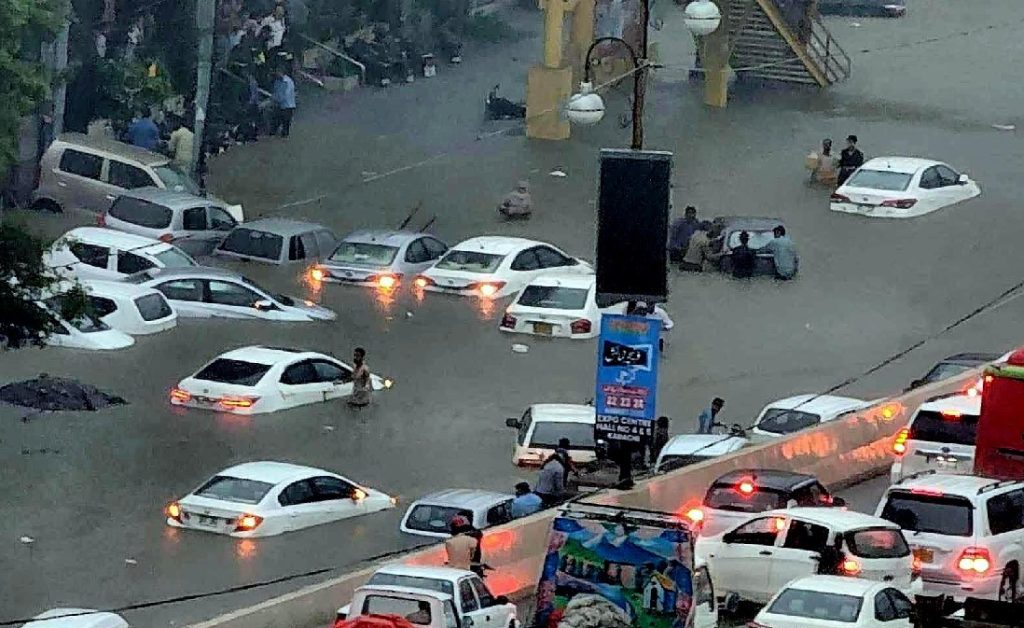
KP is followed by Punjab with 164 fatalities, Gilgit Baltistan (GB) with 32, Sindh with 29, Balochistan with 20, Azad Jammu and Kashmir (AJK) with 15, and Islamabad with eight.
Among the victims, 394 were men, 95 women, and 171 children. The total number of injured has reached 935, most of them in Punjab (582), while 245 were reported in KP, 40 in Sindh, 37 in GB, 24 in AJK, four in Balochistan, and three in Islamabad.





